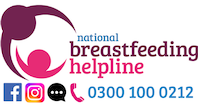This information is also available in PDF format by clicking here.
The information provided is taken from various reference sources. It is provided as a guideline. No responsibility can be taken by the author or the Breastfeeding Network for the way in which the information is used. Clinical decisions remain the responsibility of medical and breastfeeding practitioners. The data presented here is intended to provide some immediate information but cannot replace input from professionals.
Bipolar disorder has a prevalence of 0.4-1% of the population and is equally common in men and women. Typically symptoms begin in the mid-20s so may affect women who may be pregnant or breastfeeding. Diagnosis is made only after one episode of mania as well as the depression. In this state the mother may have an elated mood or alternatively she may feel irritable and angry. She may experience racing thoughts rapidly changing from one area to another. It may be impossible for her to be still but the activity may be unproductive. It is reported to affect a higher proportion of intelligent people with gifted creativity.
Treatment includes anti-depressants, mood stabilisers (Carbamazepine, valproate or lamotrigine), lithium and so called atypical antipsychotics – risperidone, olanzapine and quetiapine being the most common.
Choice of medication must be guided by clinical need but it may, depending on the dose, be possible to continue to breastfeed. If it is not possible, the mother and her family deserve to be consulted in making an informed choice. It is important for the safety of mother and baby that medication is taken even if this means not breastfeeding.
Below are copies of the information available from LACTMED (the source of information recommended by NICE PH11 Guideline) accessed online May 2016 (http://toxnet.nlm.nih.gov/cgibin/sis/htmlgen?LACTMED). Full details can be send to healthcare professionals or families.
Lithium is not compatible with breastfeeding.
For full information on the safety of risperidone, quetiapine and onlanzapine please consult LactMed (free online access) https://toxnet.nlm.nih.gov/cgi-bin/sis/htmlgen?LACTMED
Summary of the information of the data available on the date of preparation of this information is given below.
Sources of support
- MIND www.mind.org.uk/
- BiPolar UK www.bipolaruk.org/
Summary of drug levels taken from LACTMED May 2016
Drug Levels and Effects Risperidone :
Summary of Use during Lactation:
Limited information indicates that maternal risperidone doses of up to 6 mg daily produce low levels in milk. Because there is little published experience with risperidone during breastfeeding and little long-term follow-up data, other agents may be preferred, especially while nursing a newborn or preterm infant. A systematic review of second-generation antipsychotics concluded that risperidone seemed to be the second-line agent during breastfeeding because of its relatively high passage into milk.[1]
Drug Levels and Effects Quetiapine:
Summary of Use during Lactation:
Maternal quetiapine doses of up to 400 mg daily produce low levels in milk. Limited long-term followup of infants exposed to quetiapine indicates that infants generally developed normally. A systematic review of second-generation antipsychotics concluded that quetiapine seemed to be the first- or second-line agent during breastfeeding.[1] Monitor the infant for drowsiness and developmental milestones, especially if other antipsychotics are used concurrently.
Drug Levels and Effects Olanzapine :
Summary of Use during Lactation:
Maternal doses of olanzapine up to 20 mg daily produce low levels in milk and undetectable levels in the serum of breastfed infants. In most cases, short-term side effects have not been reported, but sedation has occurred. Limited long-term follow-up of infants exposed to olanzapine indicates that infants generally developed normally. A systematic review of second-generation antipsychotics concluded that olanzapine seemed to be the first-line agent during breastfeeding.[1] Monitor the infant for drowsiness and developmental milestones, especially if other antipsychotics are used concurrently.
Bibliography
- Hale T Medications and Mothers Milk
- Jones W Breastfeeding and Medication (Routledge 2018)
- Lactmed database accessed
- BNF accessed online
©Dr Wendy Jones MBE, MRPharmS and the Breastfeeding Network Sept 2019

